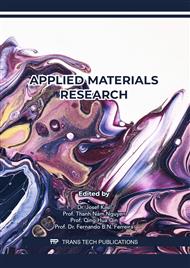p.93
p.99
p.107
p.113
p.119
p.127
p.133
p.139
p.147
Effect of Carburizing Helium Environment on Corrosion Behavior of the High-Temperature Alloys for High-Temperature Gas-Cooled Reactor
Abstract:
The primary coolant of High-Temperature Gas-cooled Reactor (HTGR) is expected to contain impurities that can make corrosion to structural metallic materials at elevated temperatures. According to the chemical thermodynamics and kinetics, the carbon activity of helium can be calculated, and it is indicated that a high “CH4/H2O” ratio may lead to severe carburizing of the alloys. On this basis, corrosion tests were conducted on the three heat-resistance alloys Inconel 617, Hastelloy X, and Incoloy 800H at 950°C using helium environment with impurities, and mainly the effect of carburization was investigated. The corrosion samples were observed by Scanning Electron Microscopy (SEM) with Energy Disperse Spectroscopy (EDS), Electron Probe Microanalyzer (EPMA), and Carbon-sulfur Analyzer. These all alloys showed the oxidation and carburizing behavior, in which the carburized depth of Hastelloy X was shallow due to the dense oxide scale.
Info:
Periodical:
Pages:
119-126
Citation:
Online since:
June 2022
Authors:
Keywords:
Price:
Сopyright:
© 2022 Trans Tech Publications Ltd. All Rights Reserved
Share:
Citation:


